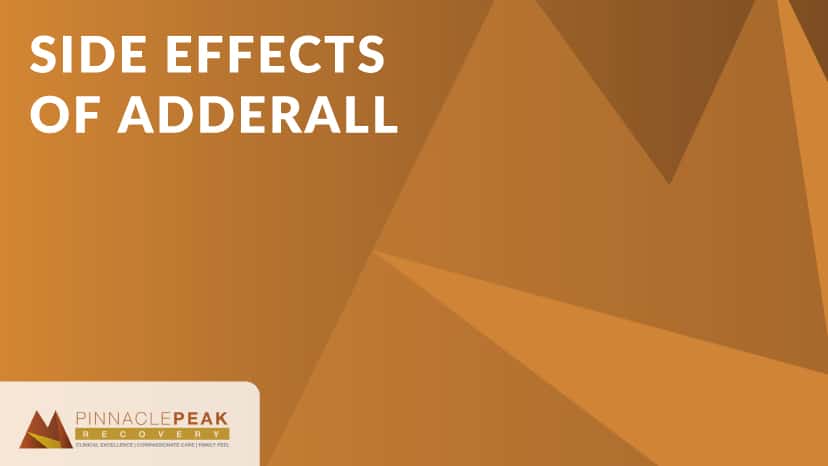My name is Brian. I was introduced to prescription Adderall as a teenager. My grades were never good throughout elementary school and middle school. I was the kid that got “passed along” grade to grade because I was nice and well-meaning.
Even though it was difficult for my body to stay still, I was never acting out on purpose. I would often mutter a quick “sorry” when elementary teachers would notice my busy body. Given I was apologetic and agreeable, I generally flew under the radar.
School became more and more challenging in middle school with multiple classes and teachers. I struggled academically, and one caring math teacher took notice of my struggles. After the teacher expressed his concerns with my mom, my mom and I went to my doctor for further evaluation.
The doctor had my mom and teacher fill out a survey called the “Vanderbilt” to better understand their concerns for me based on their observations. On the survey, both my mom and teacher noted I had much difficulty maintaining my attention, often did not readily listen, and would frequently lose things necessary to complete school and home tasks. Both my mom and teacher described me as forgetful, fidgety and squirmy, and always “on the go.”
Given this evaluation, the doctor prescribed a low dose of Adderall to better manage my symptoms that aligned with attention-deficit hyperactivity disorder or ADHD. Although my Adderall addiction journey would not begin until my college years, this was my first introduction to Adderall.
Defining Adderall
According to the “Experience Psychology, Fourth Edition” textbook by Laura A. King, Adderall is a type of stimulant medication. Adderall is often the first line of treatment for treating attention-deficit hyperactivity disorder (ADHD). ADHD is a mental health disorder that involves symptoms of inattentiveness and/or hyperactivity.
It may seem odd to a layperson that the treatment for a restless person would be using a stimulant. Adderall works by increasing the amount of circulating dopamine, a chemical messenger in the brain that gives us pleasure when we do something rewarding. With the aid of Adderall, the person struggling with inattention and/or hyperactivity does not need to engage in additional activity to experience the pleasure associated with dopamine.
Side Effects of Adderall
When I first began taking Adderall as a middle school student, I remember thinking I was finally able to focus and appear somewhat normal like other kids. School became more manageable, and I was able to successfully complete middle school and high school with minimal challenges. Instead of my body controlling me, I was controlling my body with the help of Adderall.
As far as early side effects go, I remember needing to go to the restroom more at school than at home. I would be given Adderall at the beginning of the school day by the school nurse to gain the benefits of increased focus and attention while at school.
There are many side effects related to taking Adderall. According to the Mayo Clinic, more common side effects of Adderall include:
- Bladder pain
- Bloody or cloudy urine
- Difficult, burning, or painful urination
- Fast, pounding, or irregular heartbeat or pulse
- Frequent urge to urinate
- Lower back or side pain
- Less common side effects of Adderall include:
- Chills
- Cough
- Diarrhea
- Fever
- General feeling of discomfort or illness
- Headache
- Hoarseness
- Joint pain
- Loss of appetite
- Muscle aches and pains
- Nausea
- Runny nose
- Shivering
- Sore throat
- Sweating
- Trouble sleeping
- Unusual tiredness or weakness
- Vomiting
What Is Stimulant Use Disorder?
When I began college, I started to be challenged in new ways. The school workload was much more demanding than I was used to. I felt increased pressure to perform well academically. In my mind, there was no time for me to develop these skills for college over time, I needed to perform better right now. I started taking a half dose more Adderall than I was prescribed. Soon enough, I was taking two more doses than was prescribed, and I started bumming Adderall off of classmates, too.
I would notice that the days I couldn’t get my increased dosage of Adderall, I was more irritable and had less energy. I would get headaches, too. As I became more and more dependent on Adderall, I noticed that my relationships with my family and my girlfriend suffered. My focus was only on getting more Adderall, not on being present for others in their time of need. I looked more and more disheveled as my time, energy, and focus hinged on getting more and more Adderall.
When I decided to get professional help to address my issues with Adderall, the counselor interviewing me mentioned that I probably had “stimulant use disorder” based on my current symptoms.
The counselor and I discussed how I often take more Adderall than what is prescribed. We discussed the negative effects of my misuse upon my social relationships. We discussed my increased tolerance as I want more and more Adderall to achieve past feelings of control.
Adderall misuse may qualify as a stimulant use disorder. The “Diagnostic and Statistical Manual of Mental Health Disorders Fifth Edition” (DSM-5), published by the American Psychiatric Association, uses the following criteria to diagnose stimulant use disorder. These are the criteria modified with Adderall use in mind:
- A pattern of Adderall use leading to significant impairment or distress as evidenced by at least two of the following symptoms within a one-year time period:
- Adderall is taken in larger amounts or longer than was intended
- Ongoing desire or unsuccessful attempts to reduce or control Adderall use
- Much time spent in activities geared toward getting Adderall, using Adderall, or recovering from its effects
- Craving, desire, or urge to use Adderall
- Continued Adderall use that results in failure to fulfill responsibilities at work, school, or home
- Social or interpersonal problems are caused or made worse by using Adderall
- Significant social, work, or recreational activities are given up or reduced due to Adderall use
- Continuing to use Adderall even when it can be physically hazardous
- Adderall use is continued even when it is causing physical or psychological problems
- Tolerance
- Need more Adderall to achieve the same high or desired high
- Withdrawal
- When Adderall is reduced in amount or frequency, notice bodily withdrawal symptoms
- Adderall is taken to relieve or avoid having withdrawal symptoms
Risk Factors for Stimulant Use Disorder
The counselor I met with discussed that the highs and lows I have had throughout my adult life may be more consistent with a diagnosis of bipolar disorder instead of ADHD. When the counselor explained manic states as extremely high-energy states followed by depressive, low states, I felt like this described me.
According to DSM-5, common risk factors for developing stimulant use disorder include, but are not limited to:
- Comorbid or co-occurring mental health disorders such as:
- Bipolar disorder
- Schizophrenia
- Antisocial personality disorder
- Having other substance use disorder(s)
- Prenatal or postnatal exposure to stimulants by parents
- Exposure to community violence during childhood
- Unstable home environment
How Common Is Stimulant Use Disorder?
According to DSM-5, amphetamine-type stimulant use disorder in the United States affects 0.2% among 12- to 17-year-olds and 0.2% among those 18 and older.
According to results from the 2015 National Survey on Drug Use and Health (which includes data from Arizona), in 2015, about 1.7 million people ages 12 and older or 0.6% of this age group were classified as current misusers of stimulants. About 117,000 adolescents ages 12 to 17 or 0.5% of adolescents were classified as current misusers of stimulants. In 2015, about 757,000 young adults ages 18 to 25 or 2.2% of young adults had misused stimulants in the past month. In 2015, an estimated 779,000 adults or 0.4% of adults ages 26 or older were classified as current misusers of stimulants.
Adderall Withdrawal Symptoms
My counselor and I discussed the withdrawal symptoms I have when I can’t get enough Adderall. I tend to feel tired and want to eat more than usual. Overall, I feel sluggish and not like myself. I am more irritable than usual. I often oversleep alarms set on my phone, which leads to running late for work. I tend to have cravings for Adderall as I want the withdrawal symptoms to go away.
The DSM-5 reports that stopping or reducing Adderall use may lead to the following symptoms:
- Fatigue or feelings of being tired
- Vivid, unpleasant dreams
- Insomnia (can’t sleep enough) or hypersomnia (sleep too much)
- Increased appetite
- Psychomotor retardation (slowed body movements) or agitation (restlessness)
These withdrawal symptoms cause clinically significant distress or impairment in social, work, or other important areas of functioning. Acute withdrawal from stimulants is referred to as “a crash” as it is marked by intense and unpleasant depressed feelings and increased appetite. With depressive symptoms, there may also be thoughts of suicide. It often takes several days of rest to fully recover from withdrawal symptoms experienced. It is best to consult with a medical or mental health professional to gain assistance and guidance for medical and mental health care needs.
Adderall Addiction Treatment in Arizona at Pinnacle Peak Recovery
There is Adderall addiction treatment available at Pinnacle Peak Recovery in Scottsdale, Arizona. Our Adderall treatment center offers psychotherapy and evidence-based, holistic treatments. A holistic treatment approach means treating the whole person: mind, body, and spirit.
Pinnacle Peak Recovery also offers dual diagnosis treatment. This means we tailor treatment to target issues stemming from both substance use disorder(s) and mental health disorder(s). We recognize that often addiction and mental health operate hand in hand; thus, it is in the best interest of the patient for our treatment to be comprehensive.
Pinnacle Peak Recovery recognizes that there is not a “one size fits all” approach to addressing your unique substance use and mental health concerns. At Pinnacle Peak Recovery, treatment options are tailor-made for you and may include:
- Various types of therapy approaches
- Dialectical behavior therapy (DBT)
- A therapy approach that teaches mindfulness, distress tolerance, interpersonal effectiveness, and emotion regulation
- Experiential therapy
- Engage in activities to build life skills and self-confidence. May include wilderness therapy, adventure therapy, etc.
- Fitness therapy
- Using exercise to counter negative, cyclic thoughts and behaviors that contribute to addiction
- Holistic therapy
- Increase awareness of mind-body-soul connection
- Individual therapy
- One-on-one support from a therapist
- Meditation
- Learn how to practice meditation, which can lead to enhanced feelings of gratitude and a greater sense of mindfulness.
- Therapeutic recreation
- Engage in activities and interact with nature while working toward treatment goals.
- Yoga therapy
- Learn the importance of deep breathing, postures, and meditation.
- Dialectical behavior therapy (DBT)
Reach Out to Pinnacle Peak Recovery
Brian represents the journey of many people struggling to overcome Adderall addiction. If you or your loved one is struggling with Adderall use, please contact Pinnacle Peak Recovery at (866) 377-4761 to begin your journey toward a healthier future.
FAQs
What are the most common side effects of Adderall?
The common side effects of Adderall include bladder pain, difficult or painful urination, irregular heartbeat or pulse, frequent urge to urinate, and lower back or side pain.
What does Adderall do to a normal person?
Adderall works by increasing the amount of circulating dopamine, a chemical messenger in the brain that gives us pleasure when we do something rewarding. With the aid of Adderall, a person does not need to engage in additional activity to experience the pleasure associated with dopamine. Adderall gives a normal person more energy and focus.
Can Adderall change your personality?
Long-term misuse of Adderall could potentially result in a person having aggressive or psychotic behaviors. This could include having violent outbursts, being paranoid (suspicious), and engaging in risk-taking behaviors.



